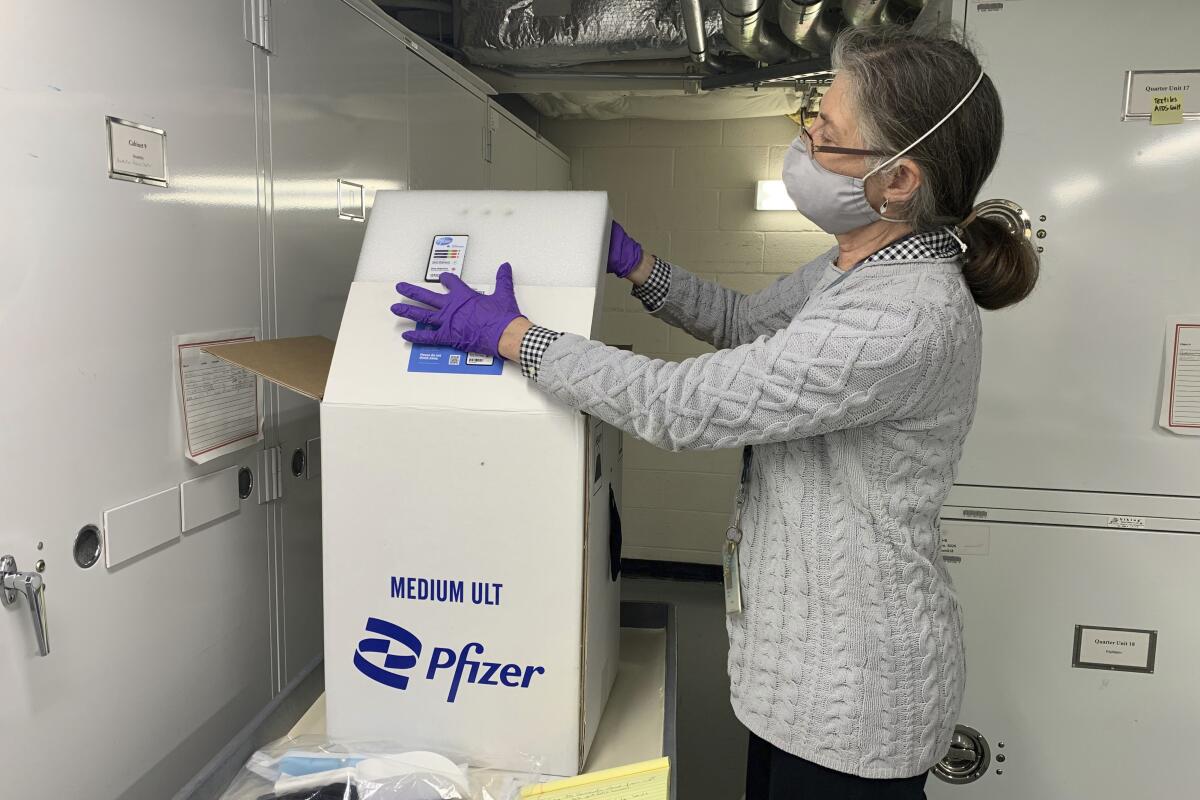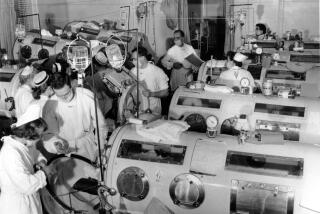Smithsonian museum of American history acquires first COVID-19 vaccine vial

WASHINGTON — The Smithsonian’s National Museum of American History has acquired the vial that contained the first dose of COVID-19 vaccine administered in the United States as part of its plans to document the global pandemic and “this extraordinary period we were going through.”
The acquisition, along with other materials related to that first vaccine dose, was announced by the museum Tuesday to mark the upcoming one-year anniversary of the pandemic. Associated Press journalists were given an exclusive look at the materials, which include vials, special shipping equipment and the medical scrubs and ID badge of the New York City nurse who was the U.S.’ first coronavirus vaccine recipient.
“We wanted objects that would tell the full story,” said Anthea M. Hartig, the museum’s director. “Everything from the scrubs to the freezer unit that shipped the vaccines.”
The museum is choosing to mark Thursday — March 11, the day last year that the World Health Organization declared a global pandemic. That’s also the week that much of American life shut down as the virus made inroads into offices, homes and sporting events.
Daniel Fish, Culture Clash, Dael Orlandersmith, Richard Maxwell, Annie Dorsen and Lars Jan reveal much loss — but also see a way forward.
“Our broadest mandate was to document this extraordinary period we were going through,” said Diane Wendt, a curator in the museum’s medicine and science department. “We particularly had our eye on vaccine development from the start.”
The first dose of vaccine in the U.S. was given on Dec. 14 by Northwell Health, a New York-based health provider, to Sandra Lindsay, an intensive care nurse. The donation from Northwell includes the original Pfizer vials as well as the specialized shipping container, about the size of a hotel room refrigerator, that delivers the Pfizer doses packed in dry ice.
“Our curators were particularly interested in the process and the packaging,” museum spokeswoman Melinda Machado said. “The story of the vaccine is not just what goes in your arm.”
The National Museum of American History closed on March 13 last year along with other Smithsonian facilities, including the National Zoo. It reopened on a limited basis in September but closed again around eight weeks later, before Thanksgiving, as local virus numbers started going back up.
But even with doors shuttered, Hartig said the museum had what she called a “rapid response collecting task force” of curators looking at ways to tell the story of this time in American history. Hartig said she also had parallel curation crews out gathering material from last year’s wave of protests against police brutality and systemic racism and is now looking at artifacts to mark the Jan. 6 attack on the U.S. Capitol by supporters of then-President Trump.
Library of Congress acquires 269 sketches by late L.A. courtroom artist Mary Chaney. She chronicled trials related to Rodney King, who was beaten by police 30 years ago.
The new COVID-19 materials will join the museum’s extensive medical collection, which includes one of the first batches of the polio vaccine developed by Dr. Jonas Salk in 1955 and specialized syringes and vaccination cards from that era. The collection also includes the personal blue and pink plastic coronavirus model donated last week by Dr. Anthony Fauci, the longtime immunologist who has become synonymous with the fight against COVID-19.
Museum officials said they weren’t sure if the coronavirus-related materials would be on display immediately when the museum reopens later this year. For now, they are planning to use them as part of a larger display on the history of medicine that is expected to debut next year.
More to Read
The biggest entertainment stories
Get our big stories about Hollywood, film, television, music, arts, culture and more right in your inbox as soon as they publish.
You may occasionally receive promotional content from the Los Angeles Times.











